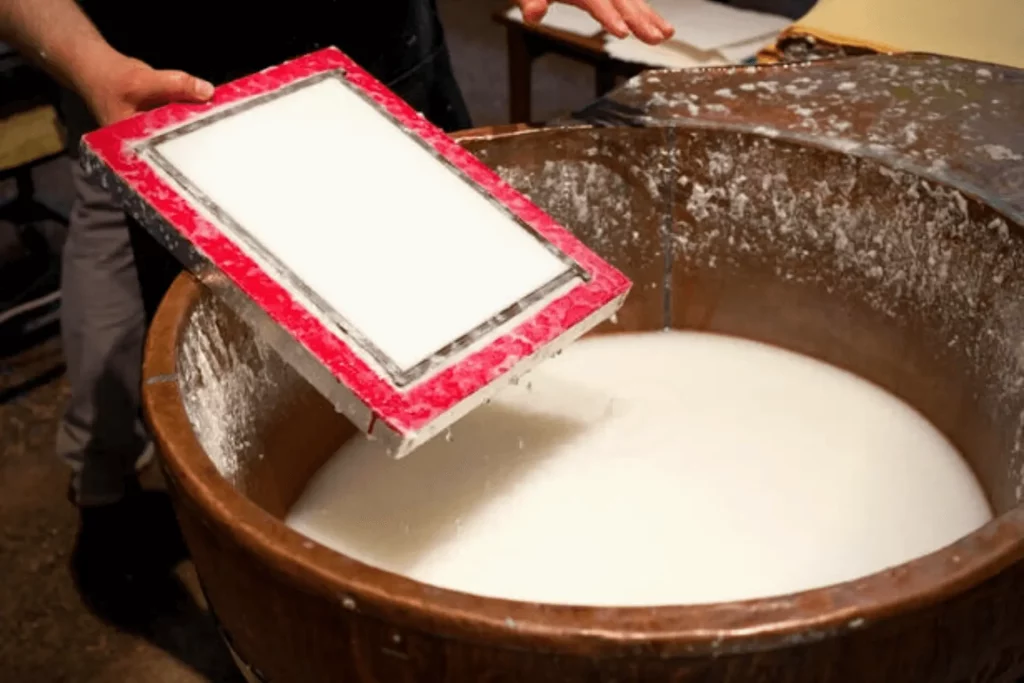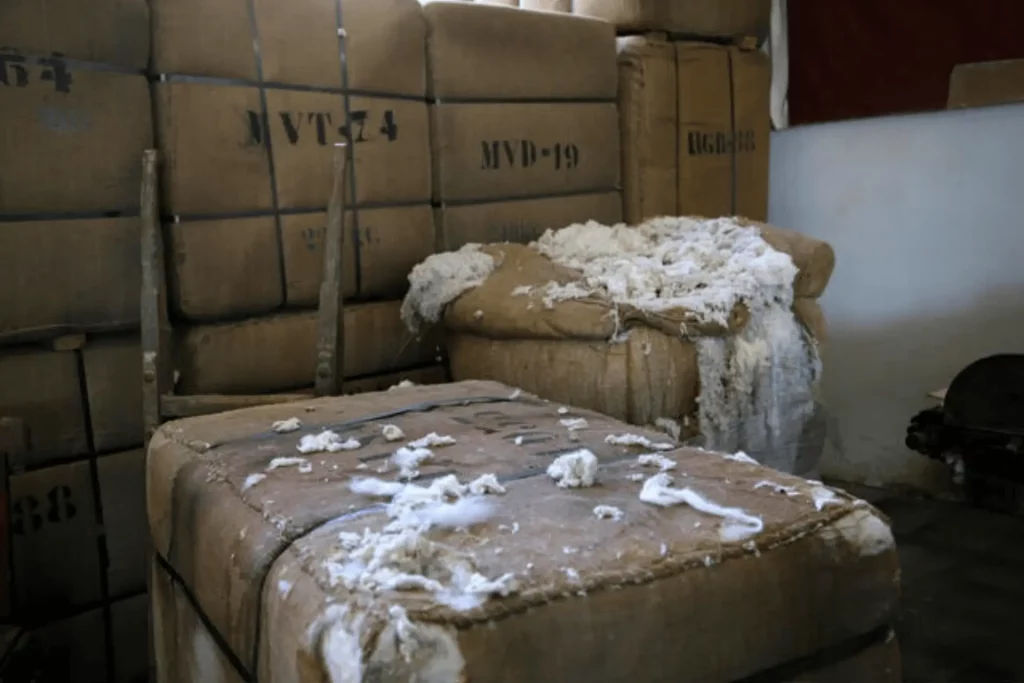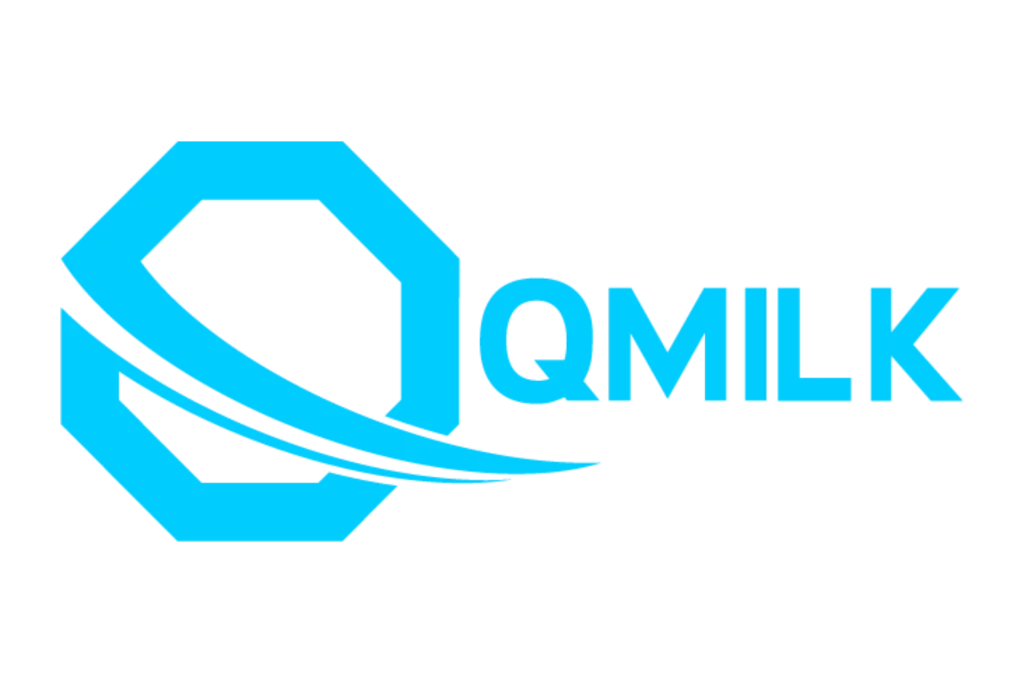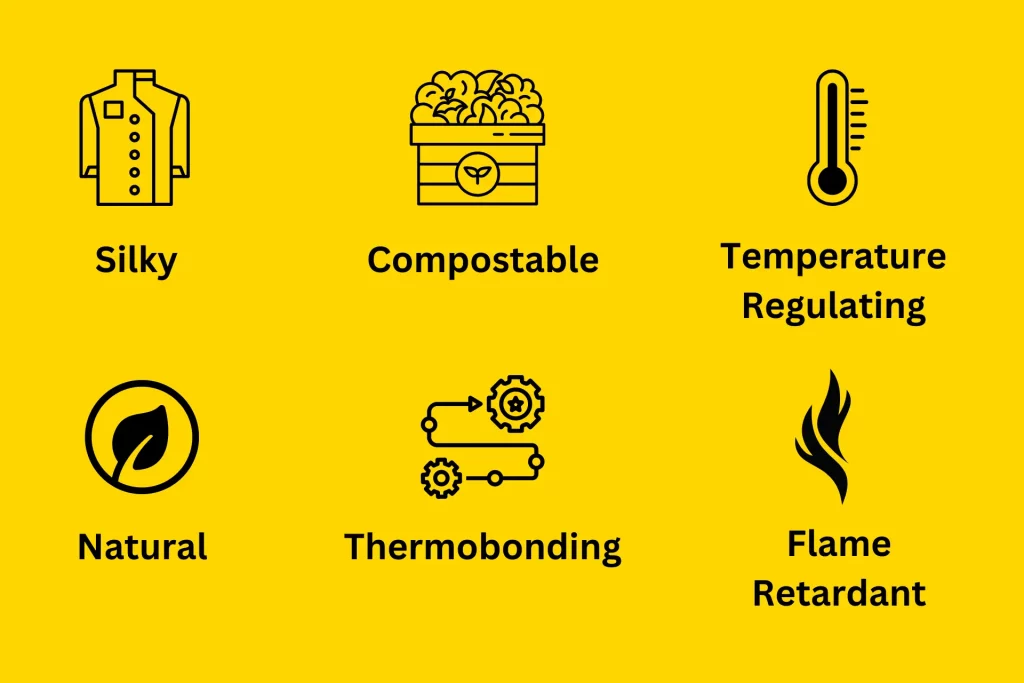Are you a fan of crafting? If so, you’ve probably heard the term “milk cotton yarn” being thrown around a lot. But what is it exactly, and why should knitters and crocheters be interested in this type of yarn?
Milk cotton yarn is quickly becoming a go-to option for its versatility, strength, and unique style, adding something special to whatever project it’s used. In this blog post, we’ll dive into everything there is to know about milk cotton – from its history to its advantages for crafters.
So grab your knitting needles or crochet hook because, by the time you’re finished reading, you’ll understand why many have fallen head over heels for this great material!
Table of Contents
How is Milk Cotton Produced?

Turning milk waste into cloth is quite sophisticated and needs many steps. To manufacture milky fabric yarn, it is necessary to remove the casein protein. Acidification of milk results in the formation of casein. These are the two primary manufacturing processes, each of which includes a variety of sub-processes. The first stage, to obtain the discarded milk, will be required of both parties.
- After skimming the fat from the milk, it is dried and fermented. Its look is comparable to that of a protein powder derived from milk.
- After being coagulated, rinsed, and dried, the casein is finally crushed into a powdery consistency before being removed as a casein fiber. The milk powder is dissolved and then purified to eliminate any components that are not casein.
- After that, the casein is dissolved in a caustic soda solution and allowed to age until it achieves the desired viscosity level. After that, it is filtered, and finally, it is vented.
- After that, wet spinning is performed on the spinning solution by forcing it via spray nozzles and into a coagulation bath.
- In the coagulation bath, there are two parts of sulfuric acid, five parts of formaldehyde, twenty parts of glucose, and one hundred parts of water. The filaments coagulate in a manner that is analogous to how thick filaments would coagulate.
- After that, the fiber must be subjected to chemical treatment to become more rigid. The majority of curing processes revolve around the use of formaldehyde. After the filaments have emerged from the coagulation bath, they are clumped together and then submerged in a formaldehyde solution. The filaments will be drawn through several stages in the procedure.
- After it has been washed and dried, it will undergo a mechanical crimping process before it is finally cut into staple fibers. The production of casein fiber nearly exclusively takes the form of staples, tows, or balls.
Method of Production Not Commonly Used:
Another process that is comparable but distinct in some respects, this one contains fewer stages, as well as fewer chemical components:
- First, the milk is fermented; next, it is skimmed off its fat; and last, it is dried out.
- After the removal of the casein fiber and subsequent purification of the milk powder, the product is ready for sale. The chemicals that are not casein are taken out.
- To create a solution, casein powder is first soaked in alkali and then forced through a series of nozzles.
- To remove the alkali, the solution is immersed in sulfuric acid.
- After that, the fibers are stretched and spun into yarn to make milk fibers.
- After that, it is tanned using aluminum salts and formaldehyde to create a textile that may be used for making food-based clothes.
- Modern Technique.
- Because of the detrimental effects that formaldehyde and other compounds have, the manufacturing method has been modified to account for these factors.
- Graft copolymerization is the name of the procedure that is used in the contemporary method for the production of casein fiber. This step involves the introduction of acrylonitrile into pure casein by chemical inoculation. Even if it does not need formaldehyde, acrylonitrile is a chemical that should be avoided because it harms one’s health and can cause cancer.
Is Milk Cotton Yarn Eco-Friendly?

In the 1930s, milk fiber was produced using formaldehyde, and the manufacturing method was not economical. Nowadays, the manufacture of milk casein fiber is far more environmentally friendly than it was back then. Because there was a greater demand for wool than there was supply, it was only employed momentarily as a substitute for wool before being supplanted with cheaper synthetic materials such as nylon.
Now, a German business named Qmilk has developed and patented a method for producing milk casein fiber that does not involve using any potentially hazardous chemicals used in earlier production methods.
Producing milk casein fiber on a smaller scale is straightforward and may even be helpful if it uses milk that would have otherwise been thrown away. It is estimated that almost 2 million tonnes of milk are discarded each year…and that is just in Germany.
Therefore, if we could guarantee that milk protein textiles were exclusively created from discarded milk, you might consider it environmentally benign.
When demand rises over that threshold, it becomes problematic for businesses to try to keep up with it because they run the risk of running out of supplies. Only some companies can ensure that they will have a consistent supply of milk that would otherwise be thrown away.
On the other hand, there will be little of an increase in demand for milk fiber end goods because those items have incredibly high prices.
Who is Qmilk?

Microbiologist Anke Domaske, who later founded QMilk, got the idea for the company when looking for garments that had not been treated with pesticides. Proteins found in milk drew his eye. But because the original method for producing textiles, which was utilized in the 1930s, was complex and included several different chemicals, he founded QMilk as a traditional kitchen company.
In April 2011, the QMilch GmbH was established, and there is presently a consortium of businesses engaged in the research, development, and manufacturing of biopolymers. Milk proteins and various other natural and renewable components constitute the basis for their construction.
A fabric known as QMilk is produced by spinning leftover milk into a fiber called milk fiber yarn. This milk is not fit for ingestion by humans. In the past, one would generally receive milk from a dairy. The manufacturing technique that QMilk has created is entirely natural and uses renewable resources.
Plasticizers, solvents, and chemical crosslinkers are not utilized in this production process. The fiber may be composted at home, and after a few months, it will have decomposed and biodegraded in the environment where it was found.
Applications of Qmilch Fibers:

Because of its luxurious silk-like sensation on the skin, the protein fiber known as QMILK is ideally suited for skin-to-skin contact. The following potentially hazardous chemicals are frequently discovered in textiles and other items but not in QMilk fibers:
- Solvents.
- Isocyanate And Halogens.
- Silver, Zinc Oxide, And Triclosan
- Dangerous Plasticizers.
So, what exactly is the substance that milk fiber is utilized for? QMilk fibers have applications in the fashion industry and technical uses in cleanliness and medicine.
1. The use of QMilch Fibers in the Fashion Industry:
QMilk may be spun with cotton, cellulose, or other natural fibers in addition to any wool and blended with different types of yarn. It is a versatile material that may be used in place of cotton or silk.
On the other hand, it may be blended with silk and cotton to provide a more refined texture. As a result of the milk fiber’s ability to prevent the growth of bacteria, milk cotton yarn is ideal for undergarments.
In addition to being useful for undergarments, it is also used in the production of socks, textiles for the house, and clothes manufactured from wool.
Fabric made from milk fiber can be composted, has a velvety feel, is natural, can be heat-sealed, regulates temperature, and is flame-resistant. Other benefits include: It repels water naturally and has antimicrobial properties. QMilk is the only natural fiber with characteristics that allow it to Thermo bond. As a result, it can take the place of conventional binders such as plastics and resins.
Bonding and stabilization can be accomplished by applying pressure and heat treatment up to 100 degrees Celsius. Therefore, items made from natural fibers such as hemp and linen can still be considered 100% natural. Because no formaldehyde or other chemicals are utilized in its production, this item may be referred to as a “green” product.
2. The Uses of QMilk Fibers in Technical Applications:
Milk fiber has the potential to be utilized in a variety of non-woven applications as well, including toilet paper and baby wipes. The requirements for “washable” are met by QMilk wipes since they dissolve in water and do not leave any residue. As a result, the infrastructure of the sewage system will not be negatively impacted by this.
The QMilk biopolymer is an entirely natural plastic that satisfies the parameters to be considered a bioplastic that can be composted at home. Because casein possesses superior barrier qualities, it is well suited for use in various applications within the food sector.
Plastic manufactured from petrochemical resources may be replaced with plastic made from QMilk, making possible ecologically friendly versions of these novel fibers.
3. QMilk Beauty Apps:
Microbeads are a type of naturally occurring substance that has been used in the cosmetics and skincare industries. The protein in milk comprises 18 amino acids that are good for human health.
The skin is nourished and cared for by it, one of its functions. Because the pH of milk fiber is 6.8, the same as the pH of the skin surface, beauty products made with QMilk are compatible with your skin.
Casein powder, which may be found in milk, is used to make it. Proteins are derived from milk and organic fats, with neither alcohol nor glycerol. Because it encourages the skin to generate new cells and collagen, it may be applied to the face to perform a thorough washing. In addition to these functions, QMilk is a potent antioxidant and can reduce inflammation in the body.
Using QMilk microbeads results in a mild exfoliating action, removing dead skin cells without harming the flawless skin behind them. In addition, circulation to the skin is enhanced, which results in the skin appearing more radiant and young.
Properties of Milk Fiber Fabric:
Milk fiber yarn behaves similarly to wool and has many characteristics with wool because it is a regenerated protein fiber.
- The yarn made from milk cotton is soft and breathable simultaneously.
- It feels soft and warm to the touch and is as flexible as wool.
- Because of how closely it resembles wool, the only way to tell the two apart is to put them through a burn test together.
- Naturally resistant to bacteria and extremely water-loving.
- It confers thermal stickiness to natural fiber and contributes favorably to its insulating properties.
- It does this by removing moisture from the skin thanks to the significant amount of moisture it can absorb.
- It can withstand being heated.
- It does not take much to soak up the water, making the fibers pliable and bloated.
- While wet, the milk fibers lose their strength, so when wet, handle them carefully and lay them flat to dry.
- Alkalis and mold quickly harm it; thus, it should not be kept moist for long periods.
- The Bright Future of Yarn Made from Dairy Fiber
- The production of milk cotton yarn anywhere in the world is now relatively low. Because of their high price point, the market for clothing manufactured from milk is still somewhat restricted. The price of ordinary cotton is almost forty times lower than that of the cloth produced by QMILK. Various brands of vintage clothes are available, like Aralac, Merinova, and Lanatil, which you may choose if you are seeking.
- By using milk fiber, dairies can minimize the amount of wasted milk they generate. In Germany alone, two million tonnes of milk are discarded every year. So just picture the waste on a global scale.
When it comes to keeping you dry and comfortable, merino wool is the superior choice compared to cotton. This blog post has made it clear which is the better option for the summer season.
The Future of Qmilk:

The production of milk cotton yarn anywhere in the world is now relatively low. Since clothing manufactured from milk is now somewhat costly, there is only a small market for it. The price of the fabric produced by QMILK is almost forty times that of regular cotton.
If you are interested in vintage apparel, some of the brands that were available at the time were Aralac, Merinova, and Lanatil. In the production of toilet paper manufactured using milk fiber yarn, QMilch novel fibers are employed.
Utilizing milk fiber helps minimize the amount of wasted milk that dairy farms produce. Every single year, Germany throws away two million metric tonnes of milk all by itself. So just picture the waste on a global scale.
The advancement of science also contributes to the fact that businesses are experimenting with various types of cloth. Milk waste presents a new potential for commercial development in the local textiles and clothing sector, which might lead to the creation of garments manufactured from food. The damaging effects of the milk business on the surrounding environment can be mitigated using waste.
The price being so high is now the most significant disadvantage. If the production method with the lower cost is chosen, this almost always indicates that carcinogenic chemicals are employed, which we would all like to avoid.
Although QMilk is sustainable and kind to the environment, it is not appropriate for vegans since its milk fibers are made from animal protein.
Frequently Asked Questions:
Is cotton or acrylic yarn better?
When selecting the type of yarn to use for your next project, there are a few considerations to remember when deciding between cotton and acrylic yarn. Cotton yarn is an excellent choice if there is a requirement for an item to be both absorbent and breathable, such as when sewing garments or blankets. It is also affordable, so this may be a fantastic option if you are shopping on a limited budget.
Is milk silk fabric stretchy?
Milk silk fabric is an excellent choice for anything that offers extra stretch and comfort. It’s made from a combination of cotton, polyester, and elastane, which is incredibly soft to the touch and lightweight. Its four-way stretch feature allows you to move freely without feeling restricted. So whether you’re lounging around the house, running errands, or out on a date night, milk silk fabric has you covered. It’s also perfect for all kinds of weather –breathable and moisture-wicking, so it won’t make you feel hot and uncomfortable during summer. And when winter arrives, its insulating qualities keep you warm and cozy.
What to make with cotton yarn?
Cotton yarn is great for making a variety of items. It can easily be used to make comfortable clothing such as sweaters, cardigans, and shawls. You can also use cotton yarn to create decorative home decor like doilies, table runners, and afghans. You can try making pompoms, finger puppets, or even small stuffed animals for more creative projects! Whatever you choose, cotton yarn is a versatile and easy-to-work-with material that’s perfect for any project.
Bottom Line:
In the end, milk cotton yarn is an incredibly versatile and unique material with many uses. It is soft enough for children’s clothing and baby blankets and durable sufficient to last for years, making it a great yarn. Milk cotton yarn can easily craft beautiful artwork from socks, sweaters, and hats to shawls, doilies, and afghans. In short, if you are looking for an excellent material for your crochet or knitting projects, milk cotton yarn is a must-have in any hobby crafter’s stash!

